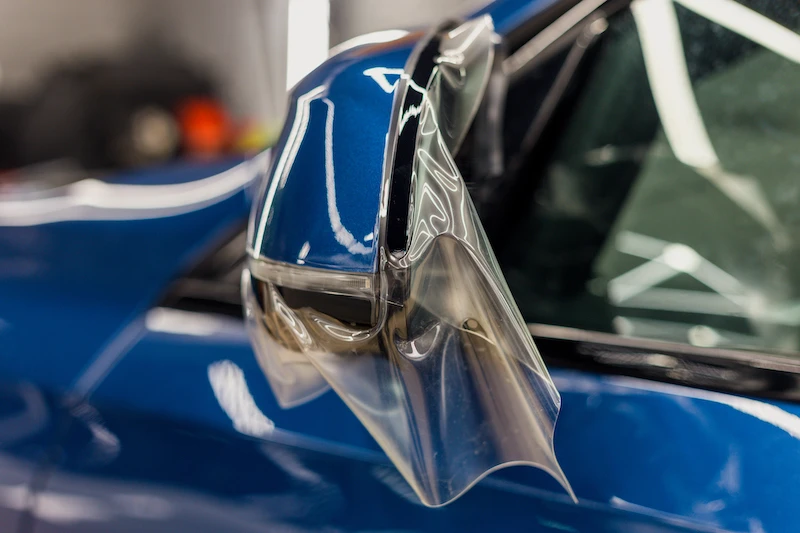Exactly How PPF Portland Can Enhance the Long Life of Your Auto's Paint Task
Exactly How PPF Portland Can Enhance the Long Life of Your Auto's Paint Task
Blog Article
Understanding Why Paint Protection Film Is Thought About the Optimal Choice for Enhancing the Longevity of Window Tinting
The integration of Paint Security Film (PPF) in conjunction with window tinting has actually significantly been recognized as a critical method to lengthening the life expectancy and aesthetic charm of colored windowss. By providing a durable barrier versus ecological factors such as UV rays and pollutants, PPF not only maintains the honesty of window filmss yet additionally simplifies upkeep.
Benefits of Paint Security Film

In Addition, PPF is highly immune to fading and yellowing, which can be typical with various other safety coverings. This sturdiness implies that lorry proprietors do not need to stress over constant reapplication or maintenance. The self-healing properties of top quality PPF permit minor scratches to go away when revealed to warmth, further improving the long life of the vehicle's appearance.

Exactly How PPF Boosts Window Tinting
The safety homes of paint protection film (PPF) extend beyond the automobile's outside to boost the effectiveness of window tinting. By working as a barrier versus ecological pollutants, PPF helps keep the quality and stability of window filmss, making sure that they carry out ideally over time. This extra layer of protection avoids scratches and abrasions from daily damage, which can substantially influence the look and performance of window colors.
Furthermore, PPF gives UV resistance that enhances the sun-blocking capacities of window tint. While window tinting decreases warmth and glare, PPF further reduces harmful UV rays, safeguarding both the automobile's interior and the tint itself from fading and degeneration. This harmony not just lengthens the life expectancy of the color but additionally improves the general aesthetic allure of the vehicle.
Additionally, the hydrophobic homes of PPF make it easier to cleanse and preserve tinted windowss, protecting against dust and grime from gathering. This simplicity of maintenance guarantees that the color preserves its aesthetic appeal and performance for a much more extended period, eventually making PPF an important investment for car owners looking for to enhance their window tinting experience.
PPF Vs. Traditional Protective Procedures
Comparing paint defense film (PPF) to traditional safety measures reveals significant advantages that PPF offers for lorry owners. Traditional techniques, such as wax, sealants, or ceramic coverings, typically provide a momentary obstacle versus environmental components but usually require regular reapplication. On the other hand, PPF is a durable service that can last a number of years without the demand for constant upkeep, making it an extra economical option in the long run.
Furthermore, PPF flaunts premium impact resistance compared to standard items. It successfully soaks up small abrasions and protects against damage from road debris, while traditional waxes or sealers may just use minimal defense against scratches and chips. This resilience suggests that automobile owners can maintain the aesthetic allure of their paint, staying clear of expensive repairs.
Moreover, PPF is developed to self-heal from minor scratches and swirl marks, an attribute not located in many standard protective procedures. This self-repair capability ensures that the vehicle's surface stays aesthetically appealing for an extensive period.
Installation Process of PPF
Mounting paint protection film (PPF) entails a careful process that guarantees optimal bond and resilience (ppf portland). The very first step is comprehensive surface preparation, that includes washing the car to remove impurities and after that drying it completely. Any imperfections, such as scratches or swirl marks, need to be remedied to develop a perfect base
Following, the installer procedures and reduces the PPF to fit the details contours of the lorry. Pre-cut kits are typically used for accuracy, but custom-made cuts may be necessary for one-of-a-kind forms. A slip service, commonly a mix of water and a couple of decreases of soap, is after that applied to both the car surface area and the adhesive side of the film, permitting for repositioning during setup.

Long-Term Care and Upkeep Tips
Correct installment of paint protection film (PPF) lays the foundation for its long-lasting performance and look. To preserve the stability of the film, routine cleansing is essential. Make use of a pH-neutral cars and truck clean soap and a soft microfiber cloth or sponge to carefully get rid of dirt and particles. Stay clear of unpleasant products that could scrape the film's surface area.
Furthermore, refrain from using severe chemicals or solvents, as these can weaken the sticky and the film itself. It is advisable to clean the lorry by hand as opposed to using automatic automobile cleans, which might consist of brushes that can harm the PPF.
Evaluate the film periodically for any indications of wear or damage, such as bubbling or peeling off edges. Dealing with these concerns quickly can avoid more wear and tear. If necessary, seek advice from an expert for fixings.
Finally, stay clear of exposing the film to too much warm or straight sunlight for extended durations, as this can lead to staining and loss of sticky buildings - ppf portland. By adhering to these maintenance tips, you can guarantee that your paint security film remains to enhance the long life of your window tinting and maintain the aesthetic allure of your vehicle
Conclusion
To conclude, Paint Security Film (PPF) functions as an important part in expanding the life-span of window tinting. By offering a robust obstacle against contaminants and UV rays, PPF not only protects the quality and color stability of window filmss but also simplifies maintenance with its hydrophobic homes. The benefits of PPF over typical protective measures even more highlight its importance in automobile treatment, ensuring both visual a knockout post appeal and longevity in the long term.
The combination of Paint Security Film (PPF) in conjunction with window tinting has actually increasingly been recognized as a calculated strategy to prolonging the lifespan and visual appeal of colored windowss.One of the most substantial advantages of paint security film (PPF) is its capability to preserve the visual stability of a lorry's surface area.The protective residential properties of paint security film (PPF) prolong past the vehicle's outside to enhance the efficiency of window tinting.Contrasting paint security film (PPF) to traditional protective measures exposes substantial advantages check that that PPF provides for car proprietors. ppf portland.In verdict, Paint Defense Film (PPF) serves as an important part in extending the lifespan of window tinting
Report this page